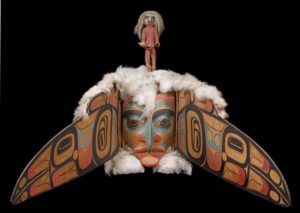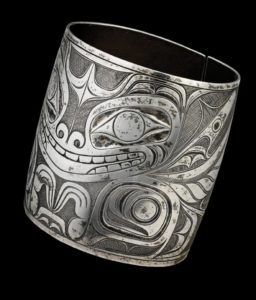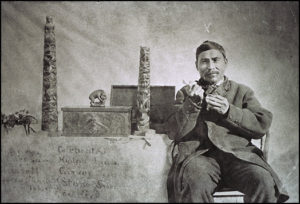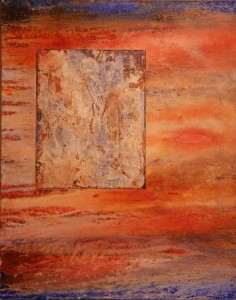Dear Artist,
Experiments published in 1999 by Cornell University researchers David Dunning and Justin Kruger showed that unskilled individuals tended to rate their competence higher than average. The researchers figured the ignorance of standards of performance was behind a great deal of incompetence in a wide range of activities — reading, grammar, geography, driving a car, playing tennis. They also found that competent people often underestimated their prowess because they falsely assumed that others have an equivalent understanding of their processes and problems. For a given skill, Dunning-Kruger proposed that incompetent people will tend to overestimate their own level of skill, fail to recognize genuine skill in others, and fail to recognize the extreme nature of their own shortcomings. The partial good news is that some incompetent students improved their ability to estimate their rank after minimal tutoring, even though they may not have actually improved.
In art workshops and mentoring sessions, I’ve noticed a few beginning artists who are impaled on Dunning-Kruger. One of the main reasons, in my observation, is the vast amount of incompetent work out there that is touted as either interesting or valuable. Because of this situation, art schools are rampant with cynicism and despair. Confused, the beginning student may think that good enough is good enough, it’s all a mug’s game, and the only thing that’s important is some form of self-expression. In comparison, in the game of tennis, results are measurable, and folks will pay to watch only the top pros. Not being Novak Djokovic is no joke. When I was a kid, the only one to stick around and watch my serves was my dad. I thought I was pretty good, and I told him, but that was when he decided to find me an art teacher.
In art schools and out, many beginning students are defying the Dunning-Kruger effect. In my experience they’re mainly loners, hard workers and networkers who believe study and private application lead to quality. These same beginners are the ones who will become the competent artists of tomorrow. And they will always question their own competence.
Best regards,
Robert
PS: “The miscalibration of the incompetent stems from an error about the self, whereas the miscalibration of the highly competent stems from an error about others.” (David Dunning and Justin Kruger)
Esoterica: The Dunning–Kruger research was done in the USA where over-confidence, fashionable optimism and hubris might have played a part. Further studies with East Asians showed opposite results. Asian incompetents knew they were doing poor work and took it as an opportunity to improve and to get along with others. These attitudes are deep-rooted in Asian cultures. “Real knowledge,” said Confucius, “is to know the extent of one’s ignorance.” On a wider scale, the Dunning-Kruger effect has been with us since the dawn of mankind and knows little of national borders. “The Foole doth thinke he is wise, but the wiseman knowes himselfe to be a Foole.” (William Shakespeare, As You Like It, 1599)
This letter was originally published as “The Dunning-Kruger Effect” on September 27, 2013.
Have you considered a Premium Artist Listing? With each letter, an artist is featured at the bottom of this page. The Premium Artist Listings are a means of connecting artist subscribers through their work. Proceeds from each listing contribute to the production of The Painter’s Keys.
“‘Tis skill, not strength, that governs a ship.” (Thomas Fuller)
Featured Workshop
 This retreat is an homage to early pioneers of plein air painting. We canoe-in and camp, paddling every day to our painting locations. This is a self-catered trip. We provide the canoes, life jackets and instruction. You bring your own provisions, tents, etc. The scenery in Kawartha Highlands is fantastic. Bald rock faces, sparkling lakes, majestic trees. Every direction you turn is another painting. Your instructor, Keith Thirgood, has been camping and canoeing all his life, and teaching artists his own unique approach to painting for over 12 years. Learn how to find order in the chaos, control your colours and create paintings that work. Learn modern colour theory, values, shapes and lines, what makes for a good painting.
This retreat is an homage to early pioneers of plein air painting. We canoe-in and camp, paddling every day to our painting locations. This is a self-catered trip. We provide the canoes, life jackets and instruction. You bring your own provisions, tents, etc. The scenery in Kawartha Highlands is fantastic. Bald rock faces, sparkling lakes, majestic trees. Every direction you turn is another painting. Your instructor, Keith Thirgood, has been camping and canoeing all his life, and teaching artists his own unique approach to painting for over 12 years. Learn how to find order in the chaos, control your colours and create paintings that work. Learn modern colour theory, values, shapes and lines, what makes for a good painting.Featured Artist
Painting is my passion and joy. My process is intuitive, though informed by good composition and design principles. I paint what I remember, or think about, or feel, or just what comes off my hands to the brush to the canvas. Texture and color are of primary importance to me. I typically choose my support, texture it, select my palette, and go. There is nothing more satisfying to me than watching paint run and move. I love the surprises. I experiment and learn constantly. It is a remarkable journey. One I am pleased to share with you.









17 Comments
This is soooo incredibly interesting! It gives a real insight into various peoples’ and cultures’ souls. My father was a world-class mechanical engineer, yet he called himself “a boilermaker’s apprentice.” This single oft-repeated attitude taught me the “skill” of being humble despite one’s competence, which was also a big value in our household. Finding one’s objective place in the scheme of it it all reveals a useful degree of wisdom.
Your continuing presence on the internet, all within the remembrance of Robert’s fine work, is crucial to the garden of excellence you encourage. In the realm of creativity art only begins to flower once each of us realizes that at its root excellence is always a process, based on the best of the self emerging, and never a static achievement.
This was an exciting article that you so generously shared with us ! Thank you ! My life as an art student, teacher and practicing painter and later artist working primarily with glass in all techniques ( I love the effect of light through glass, Crystal , acrylic and even acetate . To me the secondary images remain magical ! Everything that you spoke about in this Dunning – Kruger Effect study has been observed over the years by myself and others who have committed ourselves to practicing (and I mean PRACTICING our trade.over the 40 years that I have had the opportunity to train teachers , adults in life drawing , teenagers and younger youth and art ESL students , the cultural differences have been dramatic and your article said it very clearly . On a more personal level I became an overnight ´success’ ( 15 minutes of fame:) in 1986 and was discovered after 20 years of personal production so carefully took the advice of other female Montreal artists and was offered a solo exhibition by a now defunct downtown Peel street Gallery !
At the opening at least 5 people mostly men bragged about how their daughters or sons were Artists too ! Many were still in their early teens and hadn’t taken art lessons. What struck me the most was the parental pride they expressed but attended my opening without their young artists »! My Papa who was a Parisian always took me to The Museums on rainy Sundays and even introduced me to Dr. Arthur Lismer when I was not quite 17 and I had the honour of studying with 12 others in his grey stone school behind The Montreal Museum of Fine Arts during the final year of The Group of Seven Icons Life! Then at night I would walk down Sherbrooke street to L’école des Beaux Arts and study Lifedrawing . On the way one could walk into numerous art Galleries and see world famous and energizing artists ! That was a humbling experience and inspiring too ! It is, I believe , a question of a well rounded art education which recently has been stripped from curriculum in our schools . By that I mean students doing more than playing with materials . The elements and principles of design coupled with art history , aesthetic theory , art criticism and technique might prepare youth for a richer way of self expression . Today we appear to have moved so far away from understanding our roots that the only truly Canadian expression ( in my opinion) are the various First Nations And Inuit who have schooled their youth differently than most North American Art Schools who focus on self – expression and Conceptual Art . We need to learn to
Learn today with more than digital skills and the super fast highway of technology. We need to soften our straight lined roads that we speed down mindlessly . For that we need hands, many hands and poetic sensibility. Laura Kaufman Weisbord artistelauraca@gmail.com
As an ongoing student and artist, studying art, I see this time and time again as new students come and go. Those that leave are those that come in with the presupposed notion that they are great and nothing that the instructor tells them convinces them otherwise, yet why did they sign up? Eventually they leave. At the same time, there are others that are good, really good, yet continue to listen and grow. Such an interesting read and to see it play out in real life.
Agreed …
I’m reminded of the saying, “One day I hope to become the artist I think I am today.”
Just curious – a Trump ad appeared at the start of this article. Was this intentional?
I don’t think Trump has ever read this theory or maybe anything else either..
I Love the way Robert’s letters strike at the truth in a nice way. I have always dreamed big but I have a philosophy of Never Stop Learning.. One day I’ll get there..
Thanks for the newsletters
Your browser is likely the cause of the ad.
That ad is not on my page, thank goodness! But the Dunning-Kruger effect certainly references our political situation.
Whether it was or not, this article certainly explains a lot!
In Art School everyone was looking for some kind of “trick” or new concept that no one had ever done, to no avail but a lot of lost time when they could have been actually learning something important.
Horrified to see trump at the head of one of my favorite art related websites.
Hi Barbara,
Your browser is using an algorithm to select Google ads that appear to you on this page. Everyone sees different ads depending on their browsing history. I don’t select the ads but do set strict parameters for what can be shown here — (specifically art-related ads. ) Ad proceeds go towards the production of The Painter’s Keys.
Unfortunately, certain advertisers are buying Google ads aggressively at the moment and are blasting pages with their material to as wide an audience as possible, including us…they are hoping for a click here and there — very frustrating and I must once again revisit our boundaries for ads on this site due to the ever-plunging standards of Google’s ad content and algorithms.
Thank you all for reading and continuing to participate in this always lively discussion.
In friendship,
Sara
PS: If you dislike any particular ad, you can go to the top right hand corner of the ad and click on the blue x. It will take you to field where you can report the questionable content. S
Everyone has a right to run an ad – you don’t have to like or agree with it. Freedom of speech is still in force and as an artist it is essential.
Excellent, Barbara.
Glad it wasn’t just me!
Reportedly, Michelangelo’s last words were
“So much more to learn”!